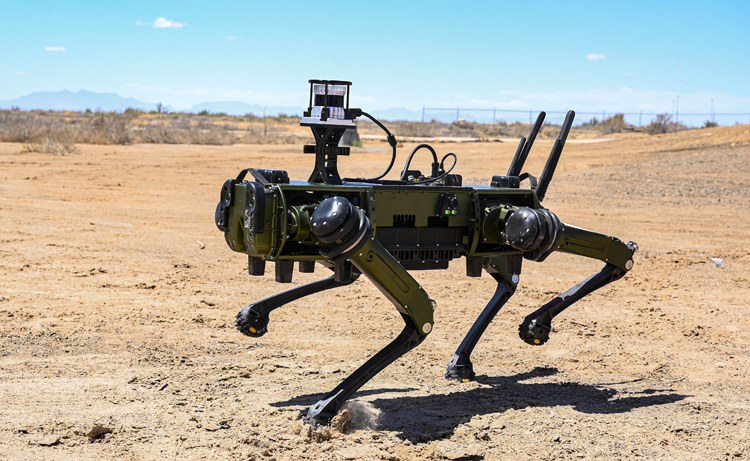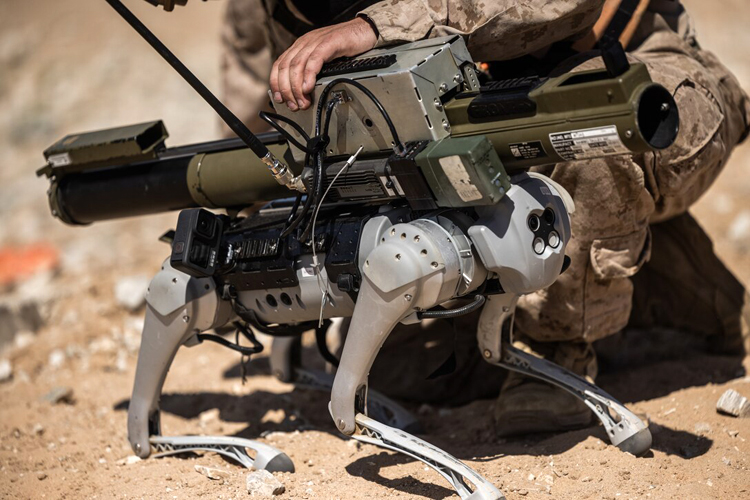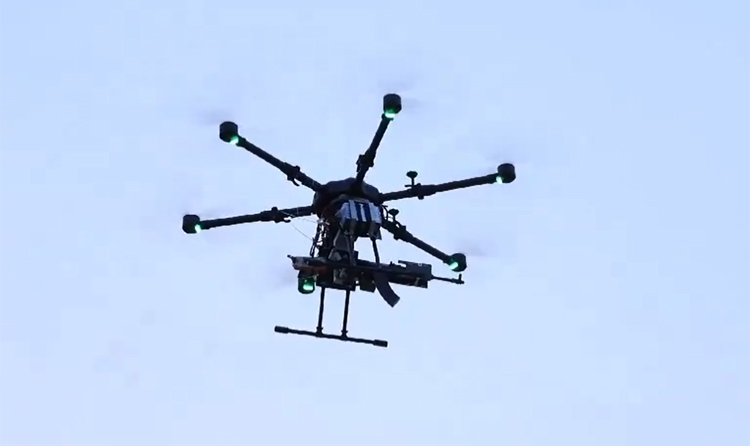INDIAN ARMED FORCES CHIEFS ON OUR RELENTLESS AND FOCUSED PUBLISHING EFFORTS

The insightful articles, inspiring narrations and analytical perspectives presented by the Editorial Team, establish an alluring connect with the reader. My compliments and best wishes to SP Guide Publications.

"Over the past 60 years, the growth of SP Guide Publications has mirrored the rising stature of Indian Navy. Its well-researched and informative magazines on Defence and Aerospace sector have served to shape an educated opinion of our military personnel, policy makers and the public alike. I wish SP's Publication team continued success, fair winds and following seas in all future endeavour!"

Since, its inception in 1964, SP Guide Publications has consistently demonstrated commitment to high-quality journalism in the aerospace and defence sectors, earning a well-deserved reputation as Asia's largest media house in this domain. I wish SP Guide Publications continued success in its pursuit of excellence.
- Operation Sindoor: Resolute yet Restrained
- India’s Operation Sindoor Sends a Clear Message to Terror and the World – ‘ZERO TOLERANCE’
- Japan and India set forth a defence cooperation consultancy framework, talks on tank and jet engines
- Terrorist Attack in Pahalgam in Kashmir: Unfolding a long surgical war against PAK
- Lt General Pratik Sharma takes over Command of Indian Army's Northern Command
Frontline Robots
In recent experiments, US Generals want to send robots to face the enemy's first bullets, as human casualties come with a significant price
 |
The Author is Former Director General of Information Systems and A Special Forces Veteran, Indian Army |

An article in 'Foreign Policy' publication dated April 6, 2024, states US Generals want to send robots to face the enemy's first bullets. The article titled 'America's Next Soldiers Will Be Machines' describes an exercise by US Army robots storming a city after dropping bombs (foam footballs) on the enemy like a perfectly placed artillery shot, while robot dogs, with sensors for heads, search houses to make sure they are clear. Drones loitered over the battlefield for hours as robots shot up houses where the enemy hid.
Robotic warfare is gaining ground but whether it can replace humans and to what extent will remain questionable. In the case of the US, casualties come with a political price for the ruling dispensation; hence, the focus on robots to face the first enemy bullets.
The Chinese military demonstrated a robot dog with an automatic rifle mounted on its back during the China-Cambodia 'Golden Dragon 2024' exercise
Two years back China's Peoples' Liberation Army (PLA) deployed machine gun carrying robots along the Line of Actual Control (LAC), as was then reported in these columns. PLA's 'Sharp Claw' and 'Mule 200' robots are operable wirelessly. 120 x Mule 200 were stationed to supply 38 combatant Sharp Claw robots. Their numbers may have gone up now. Robots have the advantage of being impervious to biological, chemical or radioactive environments.

In a military exercise with Cambodia during May 2024, the Chinese military showed a robot dog with an automatic rifle mounted on its back. In one drill, the rifle-firing robot led an infantry unit into a building. The two-minute video of the China-Cambodia "Golden Dragon 2024" exercise also shows the robot dog walking, hopping, lying down and moving backwards, controlled by a remote operator. A PLA soldier in the video says, "It (the robot dog) can serve as a new member in our urban combat operations, replacing our (human) members to conduct reconnaissance and identify (the) enemy and strike the target." The video also showed an automatic rifle mounted under a six-rotor aerial drone, termed in the video as "variety of intelligent unmanned equipment."
Concurrently, the Indian Army has announced deployment of its high-altitude logistics drone, "Airawat" (Elephant), along the LAC. Airawat is a multi-rotor platform having specifications: configuration – multi-rotor electric vertical take-off and landing; maximum take-off weight – 80 kg; payload capacity: 15-20 kg; range plus reserve: 30-45 minutes; mission range: 5-10 km; service ceiling 1,000 feet above ground level (AGL); absolute ceiling: 10,000-18,000 feet AGL; noise level – maximum 62 dB at 150 meters.

Developed by Ordnance Equipment Factory Hazratpur (OEF Hazratpur), Airawat is equipped with a cutting edge navigation system and payload capacity. During trials, the drone successfully reached an altitude of 5,000 meters near the LAC. Airawat has the ability of autonomous 10-km round trip missions and remains airborne for up to 40 minutes in high altitude areas. As to China's automatic rifle mounted six-rotor aerial drone displayed during the China-Cambodia "Golden Dragon 2024" exercise, the Indian Army had already introduced Hexacopter Drone mounted with machine gun by 'Ikran Aerospace' at the Vajra Corps, as reported in media on May 14, 2024.
Robots have the advantage of being impervious to biological, chemical or radioactive environments.
AI-aided killer drones are already on the scene. The Israeli Defence Forces (IDF) has been using the Lavender AI programme in Gaza for specific killings, as mentioned in these columns earlier. It may be recalled that on July 14, 2018, 10 Chinese DJI Phantom4 PRO drones were seized from a passenger at Bengaluru International Airport. These drones fly at 6,000 meters with half kg payload and are difficult to detect at that altitude. Notably, they can live-stream hi-definition images and their tap-by-use feature enables locking-on and tracking individuals in a crowd; which means these drones can be used for assassinations.

US-made drones in the Ukraine War have been found wanting whereas Chinese drones that are cheap and reliable have performed well. Russia has been effectively using electronic warfare and jamming. But lately Ukraine's Starlink-controlled unmanned boats have been able to target Russian vessels in the Black Sea. These boats are difficult to detect with active radar and require a more effective approach to track their control signals in passive mode, especially when they use Starlink satellite network. Starlink's antenna radiation is directed upwards, with weaker horizontal signals.
To overcome the problem, Russia has developed the 'ChVA-001-04RP-E'; a sophisticated long-range radio monitoring complex designed to detect these unmanned boats and is constructing drone squads to mimic abilities of a warship. With this system, Russia can detect their channels of information exchange by adapting signal processing algorithms to specific tasks. ChVA-001-04RP-E has a broader frequency range, fewer placement requirements for antenna devices, improved weight and size characteristics, and significantly lower cost.
Indian Army had already introduced Hexacopter Drone mounted with machine gun by 'Ikran Aerospace' at the Vajra Corps
Being a passive system, ChVA-001-04RP-E it does not emit radiation during operation, making it undetectable by the enemy. A mobile version of ChVA-001-04RP-E is also under development. According to the developer, "The trend now is mobility. Only a mobile vehicle can ensure a successful solution to the problem." All this indicates that drone and counter-drone technologies will continue to evolve that India must take note of; China's drone capabilities, including unmanned boats and satellite-controlled drones etc.

On the Indian front, the Indian Air Force (IAF) is acquiring six TAPAS-BH21 indigenous unmanned aerial vehicles (UAVs) and the Indian Navy four of these, according to recent news reports. The Tactical Airborne Platform for Aerial Surveillance Beyond Horizon (TAPAS) is designed by the Aeronautical Development Establishment (ADE) of the Defence Research and Development Organisation (DRDO) and is being manufactured by Hindustan Aeronautical Limited (HAL) and Bharat Electronics.
News reports of June 24, 2024, indicate that the indigenous Short range-unmanned Aerial Vehicle-Weaponized (SR-UAV-W), also known as 'Archer', is preparing for missile evaluation trials in coming weeks. The core objective of the missile evaluation trials is to assess the Archer's ability to launch and guide anti-tank missiles towards designated targets. Following successful missile evaluation trials, Archer could be inducted into the Indian Army.
In another development, the deep technology startup 'SAP Aerospace' of IIT has won the DRDO's Dare Dragon 4.0 Innovation Contest in the open category to develop engines for drones. According to SAP, this win is a testament of cutting-edge aero-engine technology for UAVs' with the potential to revolutionise the capabilities and functionalities of combat drones.





